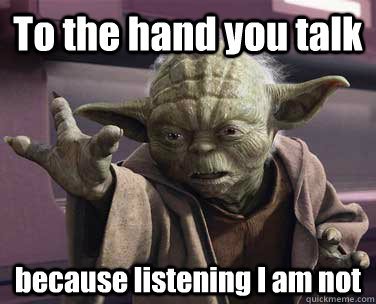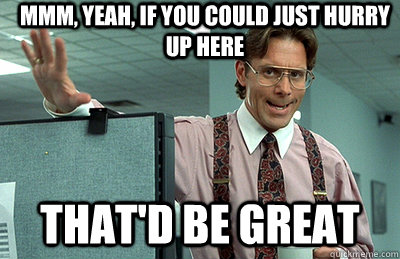5 Clients Who Will Burn Your Agency Down
To chat with Gray and have ZenPilot lead your team through the last project management implementation you'll ever need, schedule a quick call here.
This season on the Happy Client Show, we’re talking all about client fires.
We’ve already discussed 5 things you need to know about them, and 5 ways you can prevent them.
Client Fires Are Preventable
What’s key to keep in mind when we’re talking about client fires—those conflicts that spark in an agency/client partnership—is that a great deal of them can be prevented.
Much like your house, if you’re responsible and have the right alarms set up, you can catch and snuff them out before they take down the entire house.
It’s those fires that start and grow where people don’t see them that end up destroying homes. As someone leading an agency, we can’t afford to let any fires go unseen. We must catch them and handle them properly.
There Are People Who Are Flammable
One of the biggest prevention techniques that agency owners can practice is being careful about who they bring into their client family.
I say the phrase “client family” very intentionally—a client becomes a part of the culture and influences day-to-day operations. Besides the direct influence that senior leadership plays, clients have the most stake in what an agency looks like.
Agency Leadership Can Be Flammable
In a lot of situations it’s a mix of both of those factors that make an agency a nightmare to work in. If the senior leadership sets unrealistic expectations and the clients expect those promises, the people delivering the work are in for some trouble.
If leadership isn’t committed to nurturing meaningful, beneficial relationships it isn’t the clients fault. In this case, the leadership team in this agency is certainly flammable and will either churn-and-burn their staff or the entire agency.
Clients That Aren’t a Good Fit Are Flammable
The agency needs to decipher who it’s best-fit clients are. That act alone will weed out 90-percent of the trouble when prospects are being evaluated.
If a client doesn’t fit into your ideal set—a client you know you will work the best with—then it’s going to be flammable. It’s not even the client’s fault in this case. Again, it comes back to the leadership of the agency. In a case like this, your alarms will go off at every turn.
Some Client Types Should Be Avoided
There are best fits, and then there are the kinds of clients that I would recommend most agencies stay away from.
I’m not saying that some agencies don’t thrive with these kinds of partnership. I’m just saying I haven’t seen very many. These types go beyond industry—they go into mindset and values.
Let’s take a look into the 5 clients who will burn your agency down:
Persona 1: the Low-Budgeter
This might be a little bit different for each agency. The Square 2 Marketing’s of the world might have a different definition of this than your agency.
The concept here remains the same—when this prospect hears your quoted price, they say that there is no possible way they can afford it. It’s not like they’re making it up. They really can’t afford the price range.
In a lot of cases, this simply leads to parting ways and the clients going to find an agency they can afford. No harm, no foul.
When An Agency Undervalues Itself, This Gets Dangerous
Where it gets dangerous is when a prospect tries to negotiate the price down.
Some agencies will undervalue themselves, are desperate for the cash, and will fulfill that prospects price request. Suddenly, you have let someone see that they can move the price on your services and what will follow is disaster for both parties.
Your Price Should Be the Price
From a business standpoint, what does it communicate to someone if you can quickly bring your price way down? One thing it definitely says is that you gave them a bloated, B.S. price.
As an agency, you should have all your prices figured out. Your price should be the price and the only thing that should effect it is the number of deliverables on the table.
It Doesn’t Stop Here
For the agency who goes down to the low-budgeter’s price, the journey is just beginning.

From what I’ve seen, the low-budgeters are often the highest maintenance. You’ve let in a client who’s not the ideal fit for your agency. They become high maintenance and troublesome throughout the rest of the process.
Persona 2: the Lone Wolf
The Lone Wolf is exactly what it sounds like—one, lone wolf without a pack.
We’re not talking about consultants here. We’re talking about a situation where many, high-bandwidth roles within an organization are occupied by one person.

You might often see this as the president of the company that’s also the product manager, marketing director, sales guy and the customer manager. In some cases this individual may be the only employee of the company or one of a small handful.
It’s Difficult to Make This Relationship Work
I respect and admire the people who are hustling. I’m realistic though in admitting that a company structure like this isn’t ideal for partnering with an agency, especially when it comes to on-going work.
Website design/development and inbound take time and attention. There are so many elements—from producing consistent content, to getting in touch to discuss strategy—that require focus.
Someone who’s focus is spread so thin will have a hard time giving you this focus. Without that focus, your efforts are ultimately going to break down and fail at some point down the road. They might be enthusiastic at first, but eventually that will run dry.
The Ideal Point of Contact
We definitely want the president or CEO highly involved in the process, but we also want a point of contact that has the bandwidth to provide us on a daily basis. These are the kind of people that you don’t have to worry getting in touch with or meeting with.
Persona 3: the Disinterested C-Suite
This is a situation where from a business structure standpoint, things are looking good.
You might go into meeting number one with that enthusiastic marketing person. Life is good until you either hear or meet the C-Suite.

If the C-Suite isn’t bought into the idea of what you’re trying to accomplish, you’re setting yourself up for failure. Eventually, no matter what the results, the C-Suite will look at the budget for inbound and say, “Hmmm. This is a big number. What are they doing?”
The moment the C-Suite looks at the budget allotted for you and asks, “What are they doing?” is the kiss of death for the relationship. Suddenly, you’ll have your head on the chopping block and will have to prove yourself. I’ll spoil the ending—it doesn’t usually end up in your favor.
Inbound Transforms An Entire Organization
Inbound is truly transformational. It will change the way that organization grows. This being said, everyone has to be bought in.
Don’t Show Up Unless the C-Suite Does Too
The best clients are the ones that, yes, delegate the on-going communication/driving to someone. We don’t want a Lone Wolf situation here. They still, however, need to be involved in the process and be active.
Persona 4: the Big-Mouth C-Suite
I’ll never forget one of the worst meetings I’ve ever been in.
Things were shaping up nicely. 12 key players were sitting at the table. We had a banter going on and were having a good time. I thought this was shaping up to be an awesome potential client.
Until the CEO walked in.
The collaborative conversation? DEAD. The CEO started talking and did not shut up. I would pose a question to the vice president of marketing—the CEO would talk loud enough to drown out this person until they gave up. This continued for the entire meeting.
The Two Types of Big Mouths
- The domineering C-Suite member
- The uncollaborative C-Suite
The Uncollaborative C-Suite
So we just identified the domineering big mouth. They talk over everyone and don’t give key players a voice at the table.
The other is the uncollaborative big mouth. These are the CEOs that say their senior leadership team, and other member of the organization, don’t have anything useful to add.
Agency/client relationships are made strong by the collaboration of diverse perspectives. Not only does the organization needto hear the eclectic voice of its team, we as agencies need it to do our jobs well.
Persona 5: the Impatient One
The impatient persona comes from one of two situations:
- You don’t set expectations well enough in the sales process. Shame on you.
- If they hear what you’re saying, but continue to doubt you with impatience, shame on them.
Inbound Takes Time
Here’s the truth about inbound—it takes time. From the starting block, it usually takes six-to-nine months before our efforts come to fruition. If you communicate this clearly, and with case studies to back you up, most clients will understand.

The Poke
There are those personas that hear what you’re saying, seem to agree, but ultimately continue to poke.
I’ll never forget one client. Every, single meeting we were telling them, “Six-to-nine months.” They would say OK, and sure enough like clockwork, the next meeting it would be the same discussion. The sad part was they were generating a tremendous amount of leads the first month. We unfortunately didn’t get to month six or nine because they were not patient enough.
Again, inbound takes time. It’s not suited for personas that are impatient.
There You Have It
There you have it—the five types of clients that will burn your agency down. The biggest lessons here:
- Identify your ideal customer
- Be on the lookout for troublesome personalities
- Be disciplined
Here’s to your outrageous success,
Ben




